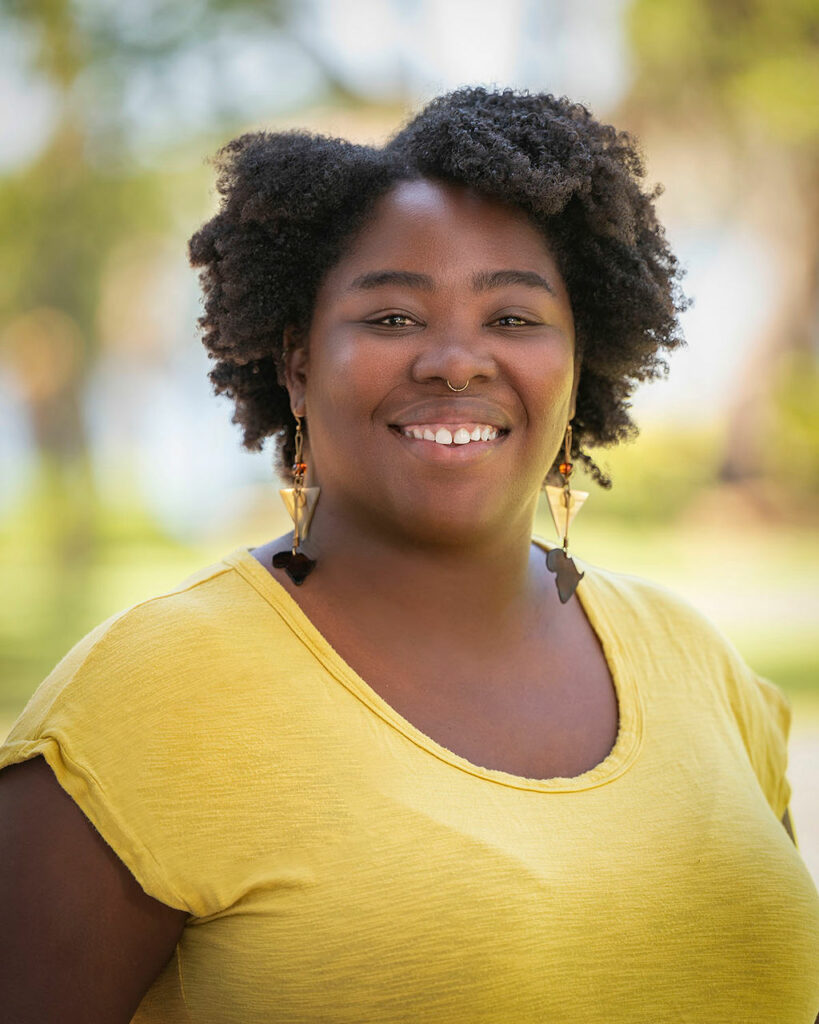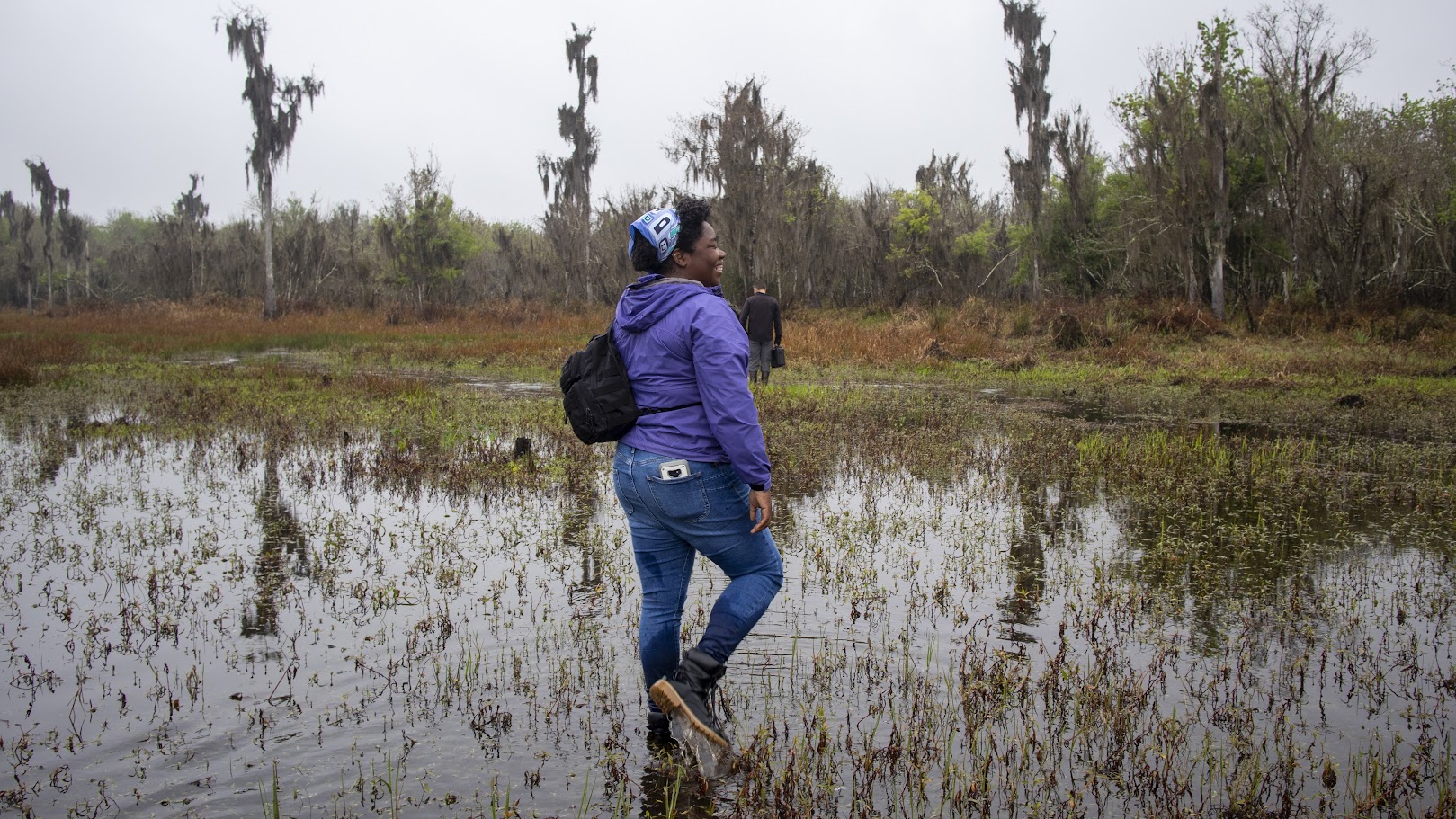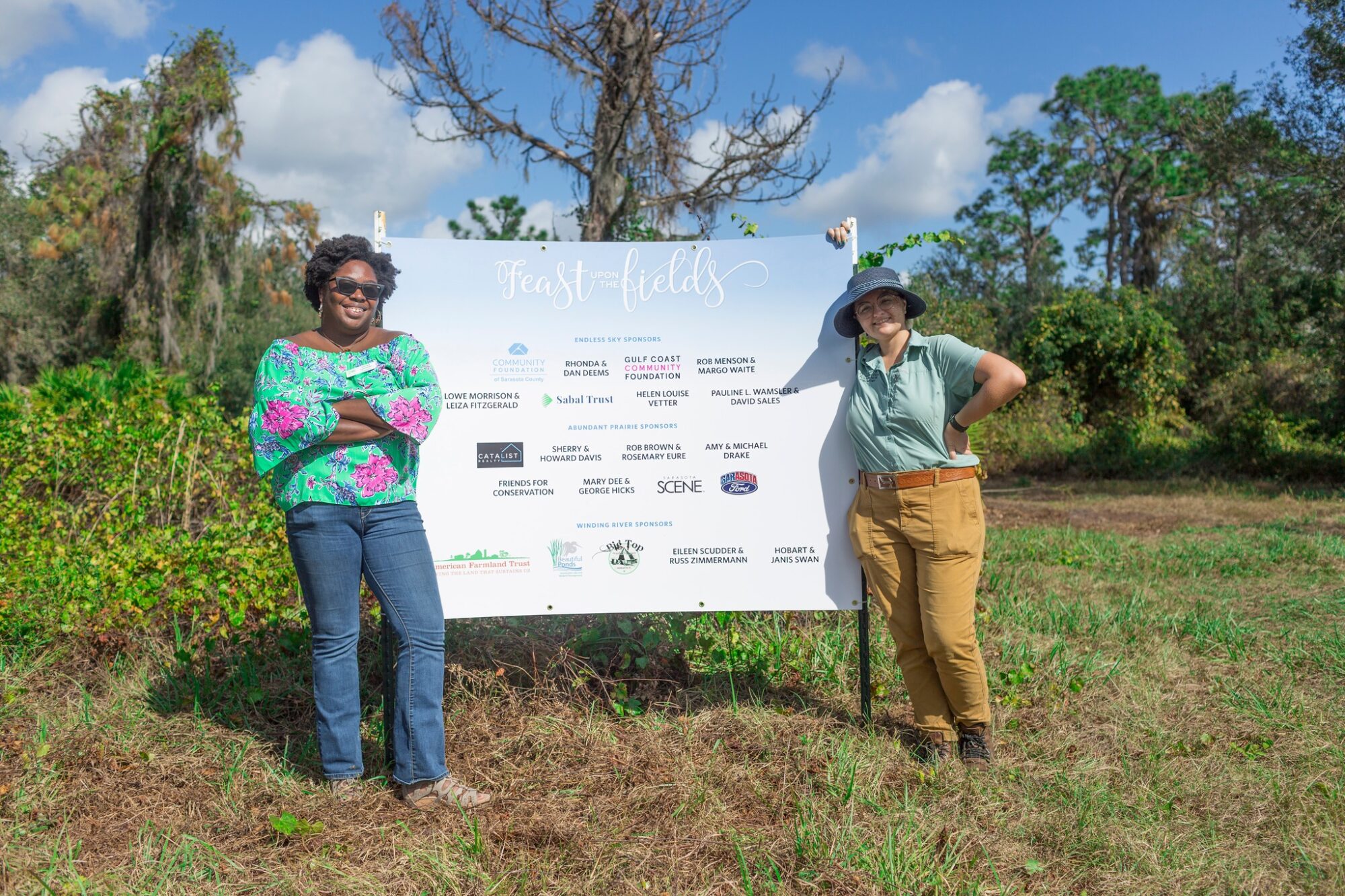Sabrina Cummings loved exploring the outdoors as a kid.

Born in Miami, she moved to Sarasota with her family as a 4-year-old—“a teeny-tiny transplant,” she says. Because they now lived so close to the beach and her mother was originally from Queens, NY (not exactly sugar-white sand and warm, blue water), “The notion of a ‘local beach’ to her was the one thing you wanted to do,” Sabrina recalls. “She was like, ‘Oh, we’re going all the time…’”
When mom got busy with work, it was Sabrina’s grandma who would take her outside for walks (and a break from the video games she was becoming obsessed with—still is). “She used to point things out and say, “What’s that?’” Sabrina remembers. “I didn’t know what it was. She didn’t know what it was either—she was from Jacksonville, it’s a different biome! She’s not a nature lady, but she made me a nature kid.”
Sabrina went on to earn a degree in Anthropology, with a specialization in Archaeology, from the University of West Florida. She then served for two years in the Florida Conservation Corps, an AmeriCorps program managed by Florida’s Department of Environmental Protection. She did a year of invasive-plant removal in Oscar Scherer State Park (think chainsaws and prescribed fires!), followed by a year of environmental education and volunteer recruitment for the Florida state park system.

That ethos of immersive, hands-on “doing” coupled with thoughtful, interpretive engagement remains at the heart of just about everything Sabrina does today. “It’s hard for me to talk about nature on its own or the human experience on its own,” she says, “because they’re essentially the same thing, right?”
A Bridge to Nature
Soon after her AmeriCorps service, Sabrina joined the staff at Conservation Foundation of the Gulf Coast, the Osprey-based nonprofit land trust that protects land and water in Southwest Florida for the benefit of people and wildlife. As Youth Education Manager, she works to bridge the gap for kids who historically lack equitable access to nature.
 That might include youngsters who live in a Sarasota Housing Authority complex 10 minutes from the beach but, for as many reasons as there are families, haven’t stepped on the sand in years. Or students at Easterseals Southwest Florida who have mobility-limited access because they interface with nature a bit differently. Or even members of a Boys & Girls Club who go from early care to a structured school day to their after-school program with little chance to simply get outside and explore like Sabrina did.
That might include youngsters who live in a Sarasota Housing Authority complex 10 minutes from the beach but, for as many reasons as there are families, haven’t stepped on the sand in years. Or students at Easterseals Southwest Florida who have mobility-limited access because they interface with nature a bit differently. Or even members of a Boys & Girls Club who go from early care to a structured school day to their after-school program with little chance to simply get outside and explore like Sabrina did.
Youth-serving organizations like these are key partners in Sabrina’s work. They provide the captive audience; she brings the outdoor and environmental education.
“We’re learning that if you make nature accessible to everyone, everyone goes!” Sabrina says. “I feel like it’s our privilege and our job to say, ‘All right, let’s all go. I’ll feed you too…’”
Among the many groups she partners with, she’s at one of the Boys & Girls Clubs of Manatee County at least once a week. At The Haven, she does gardening on Wednesdays with one-year-olds—“as much as a one-year-old can garden,” she chuckles. “They’re getting the whole ‘poking the ground’ bit.” She also works with Girls Inc. of Sarasota County, mostly in the summer, and she’s been getting more involved with the Boys & Girls Clubs of Sarasota and DeSoto Counties.
“The idea is to see who’s not outside, and build partnerships to get them outside,” says Sabrina. “And also to make access to nature in those spaces easier across the board.”
To that end, she and colleagues from Mote Marine Laboratory & Aquarium and Marie Selby Botanical Gardens have partnered on an initiative called Project Nature Bridge to help some of these groups reimagine their own outdoor spaces, with design ideas and a little sweat equity from the kids themselves.
 At Laurel Civic Association, a complete garden revamp replaced nonnative plants with ones the children helped select. The kids also gave input on how they might want to use the space—for example, to practice a musical instrument outside without disturbing homework sessions inside, or as a place for a teen to sit and read away from the younger kiddos.
At Laurel Civic Association, a complete garden revamp replaced nonnative plants with ones the children helped select. The kids also gave input on how they might want to use the space—for example, to practice a musical instrument outside without disturbing homework sessions inside, or as a place for a teen to sit and read away from the younger kiddos.
At Girls Inc., girls are growing mangroves that will eventually be replanted elsewhere as part of a restoration project. Out in Arcadia, at the Flanzer Boys & Girls Club, the group is revamping an outdoor area for a mixture of edible and flower gardening. “It will be an easy-to-use, low-intensity outdoor space for them to not be inside all the time,” says Sabrina. “We can’t always be there, so it behooves us to make spaces for them to use.”
Extending that, Sabrina’s work increasingly includes training staff at partner organizations and engaging with parents and guardians too. “A lot of the excitement with the outdoors begins with the people kids see the most,” she explains. “Overcoming barriers not only for the kids but for the adults around the kids has been pivotal.”
But Wait, There’s More…
Sabrina’s impact goes far beyond her environmental education work.
She volunteers on the leadership council of the Young Professionals Group (YPG), a program of the Greater Sarasota Chamber of Commerce. “Our YPG Council is working on finding ways to get young professionals back into the community, just ‘doing stuff’—volunteering, finding alternative things to do,” she says. For example, last year she led a group on a sunset kayak paddle from Bay Preserve, Conservation Foundation’s headquarters on Little Sarasota Bay, up to Blind Pass.
“Cultivation of young professionals is going to be important,” Sabrina says. “People want us to stay, and more young professionals are moving from other places to here. Engaging them in the entire community is really important.”
Longtime friend and fellow environmental educator Ross Johnston, who served with Sabrina on the YPG Council, says, “Sabrina’s enthusiasm for making a difference, both professionally and interpersonally, comes through loud and clear with each selfless action. Her passion for creating safe spaces and learning environments is truly admirable.”
Sabrina’s also been involved with Junior League of Sarasota for several years. “It helped me bridge the gap between myself and women on that next step up in their professional and personal lives,” she says. “I was motivated to become a more well-rounded woman.” She admits to some misconceptions before she got actively involved, but she’s seen the impact firsthand. “We are putting our money where our mouths are; we are putting our time where our hearts are,” she says. “Junior League has been great.”
Still another community passion: serving as a poll worker for the Sarasota County Supervisor of Elections. She got started around 2015, and after “a less-than-stellar experience with a voter” during the 2016 election, she saw yet another opportunity to bridge a gap—so she decided to learn how to run a precinct. Now she’s a clerk, leading an assigned polling place during each election.
“Empowering people to make decisions, knowing that there is no judgment, is important to me,” says Sabrina. “No matter how someone votes, it’s important that they do, and that they empower other people to vote.”
If you’re inspired by Sabrina’s tireless work, you can follow her lead. “I’m always trying to get people to sign up to be a poll worker!” she says. Learn how here.
Why We Care
We support programs that protect the environment and provide access for people who might not otherwise experience nature to go beyond their neighborhood and learn more about their world.

People of Impact is Barancik Foundation’s occasional series on everyday people making an extraordinary impact in our community. To read more profiles, go here.





